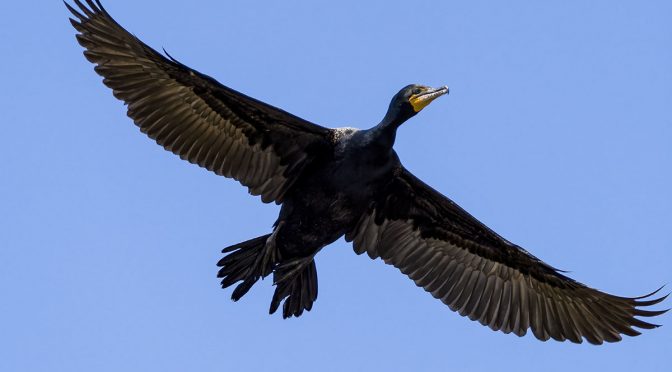The importance of practising BIF triple coordination is discussed in this article, as well as sharing a selection of new, handheld practise images. We all appreciate the need for eye/hand coordinaton when it comes to BIF (birds-in-flight) photography. Sometimes we overlook the importance of also coordinating focal length.
Like many photographers I can get caught up in the moment and not remain as cognizant as I should be when it comes to adjusting my focal length. When shooting with my lens fully extended, patience waiting for my desired image framing, takes the place of adjusting my lens focal length.
All of the photographs in this article have been displayed as full frame captures which have been resized for web use.
NOTE: Click on images to enlarge.

When practising BIF triple coordination my goal is always to fill as much of my frame without clipping any portion of the bird. So, even if I miss capturing the bird’s eye, I still consider the image a success if I achieved very tight framing of the bird.

I think it is important to remember that when we are out with our cameras in a ‘practising’ mode, our primary objective should not be to capture a high number of keeper images. The primary objective should be skills development. If we happen to get some keeper images, they are a bonus.



Even if I don’t get the bird in the perfect spot in the composition, as was the case with the three images above, I still consider the photographs to be successful practise images. The key is whether they could be successfully cropped and still be potentially usable.

Do I miss shots by clilpping wings/bodies when I’m practising BIF triple coordination? Absolutely… lots of them! The assumption that I make when I go out to practise is that I will miss photographs. If I don’t miss quite a few image opportunities during this type of practise session then I know I haven’t pushed myself hard enough. In that regard I have done myself a disservice.

One of the simple realities of life is that we don’t grow unless we are challenged.

I’ve never been all that concerned about the number of BIF photographs that I miss, especially when out practising. Keeping track of my ‘hit rate’ seems like such an odd thing to do. Any of us can dramatically increase our photographic hit rate by reducing the degree of personal challenges we give ourselves… and by not pushing the camera gear that we own.

I don’t see any upside in that approach in terms of my personal skills development, or in learning how far I can push my camera gear. Or how to use it differently to achieve my goals.

Staying within our current boundaries in terms of our personal skill set and use of our camera gear is self limiting. Most importantly it robs us of our potential.
Technical Note
Photographs were captured hand-held using camera gear as noted in the EXIF data. Images were produced from RAW files using my standard process. All images are show as full frame captures, which have been resized for web use. This is the 1,022nd article published on this website since its original inception.
How you can help keep this site advertising free
My intent is to keep this photography blog advertising free. If you enjoyed this article and/or my website and would like to support my work, you can purchase an eBook, or make a modest $10 donation through PayPal. Both are most appreciated. You can use the Donate button below. Larger donations can be made to tom@tomstirr.com through PayPal.
Word of mouth is the best form of endorsement. If you like our website please let your friends and associates know about our work. Linking to this site or to specific articles is allowed with proper acknowledgement. Reproducing articles, or any of the images contained in them, on another website or in any social media posting is a Copyright infringement.
Article and images are Copyright 2021 Thomas Stirr. All rights reserved. No use, duplication or adaptation of any kind is allowed without written consent. If you see this article reproduced anywhere else it is an unauthorized and illegal use. Posting comments on offending websites and calling out individuals who steal intellectual property is always appreciated!

